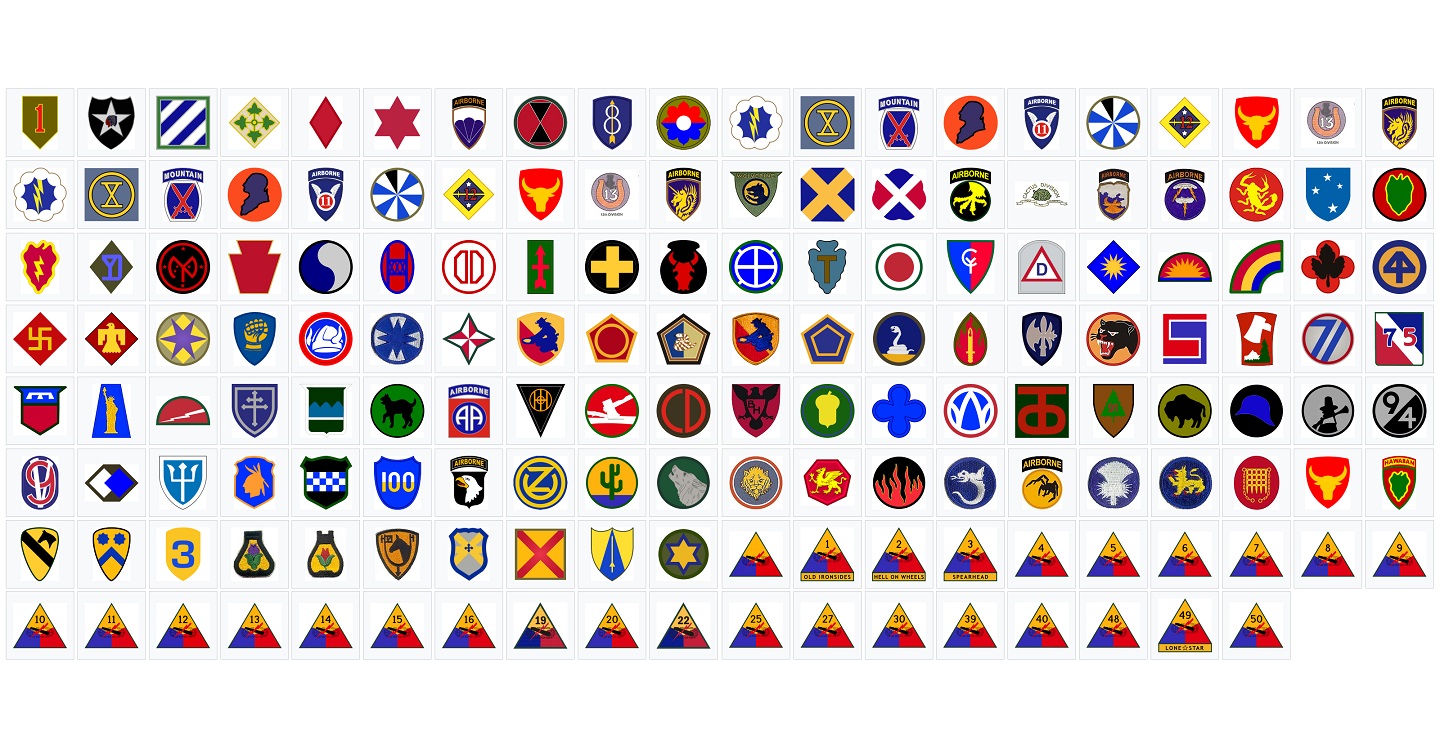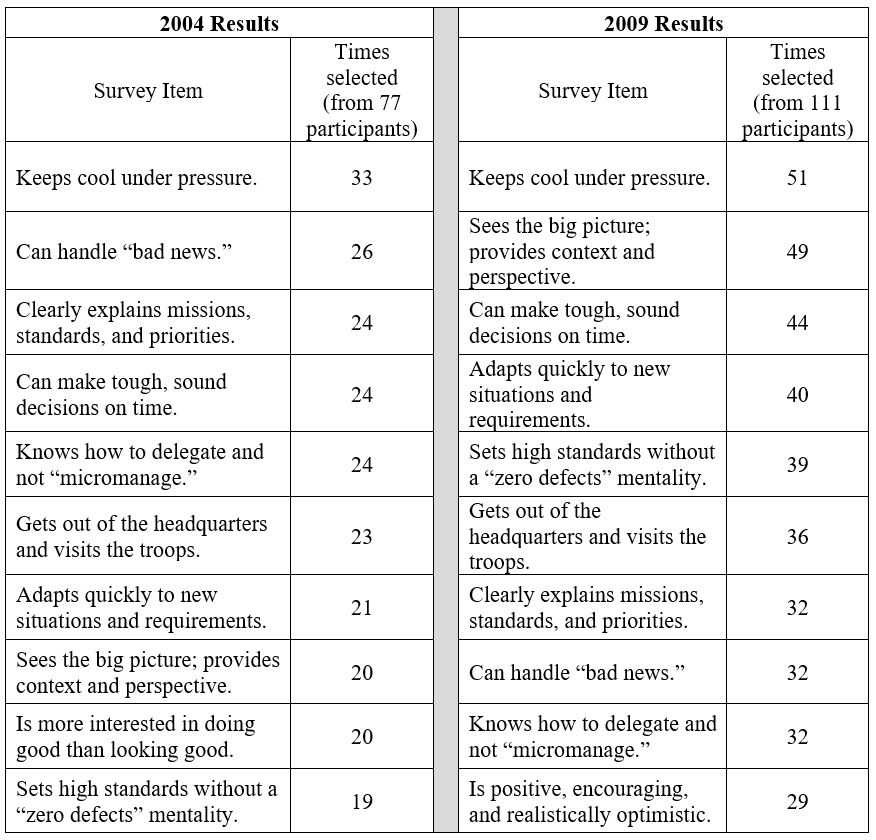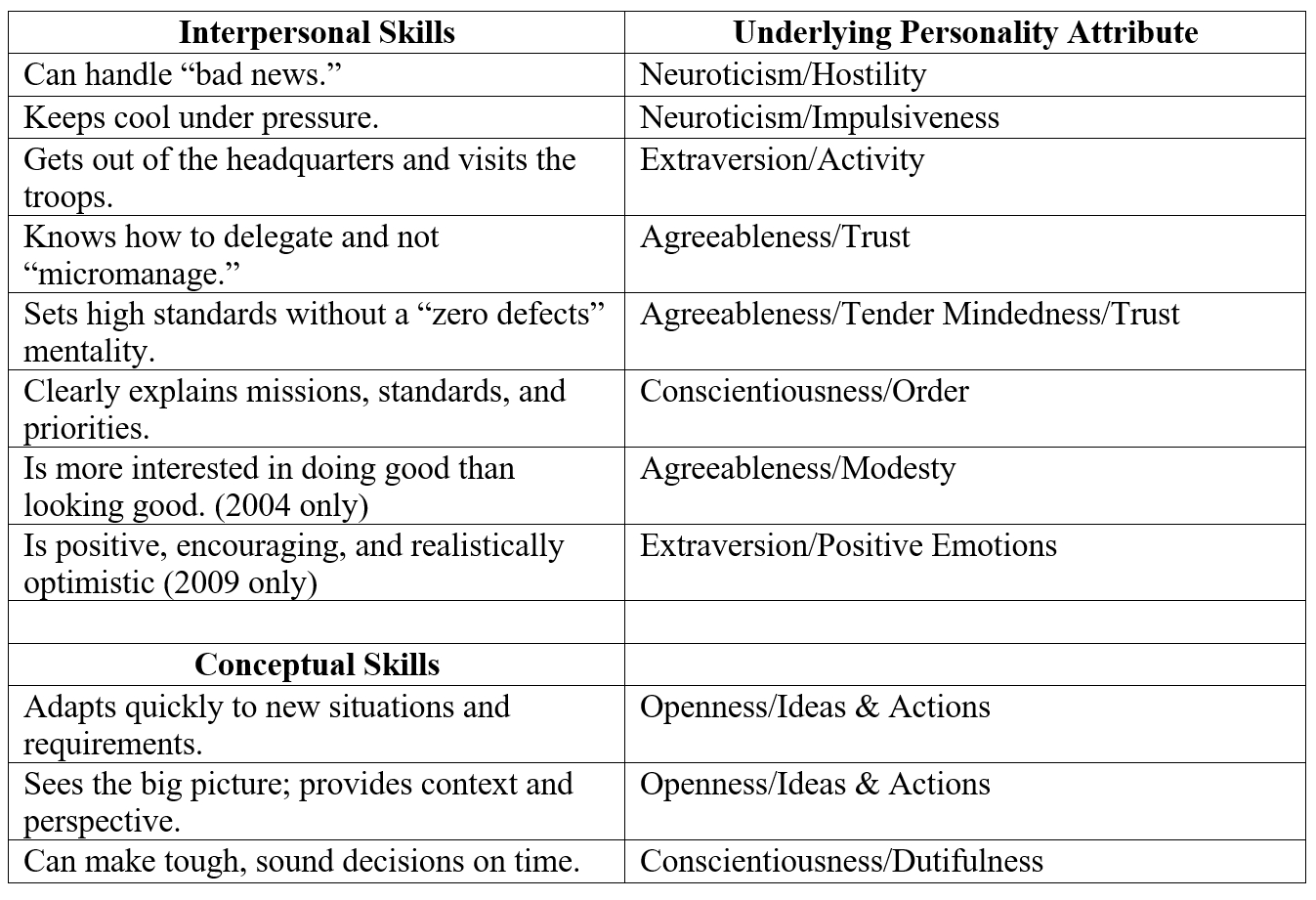
In 2004, the Commanding General, U.S. Army Training and Doctrine Command (TRADOC) directed the USAWC to conduct a study to inform the future development of Army Division Commanders
In a March 2019 War Room article, we offered observations and recommendations for senior leader development using data collected for over a decade on the leader effectiveness of General and Flag Officers (G/FOs). Based on the number of messages we received, our conclusions in “Developing Senior Officers who Soldiers want to Follow” provoked significant reaction. As intended, the essay generated conversations on leader development systems and processes and revealed intolerance for ineffective leaders, especially at senior levels. However, several readers asked for details on the most egregious behaviors we found, suggesting such information could inform efforts to improve leader development.
While our Army War College (USAWC) student data did not allow for such fidelity, another series of USAWC research projects – the Division Commander Studies – provides insight into some of the most distinguishing behaviors. We will review those findings and suggest linkages between assessed behaviors and the foundational attributes that influence them. Such a perspective could augment recent Army Talent Management efforts to integrate knowledge, skills, attributes, and behaviors. Specifically, the identification of such distinctive behaviors and their linkages to underlying attributes (e.g., personality, intelligence) can better focus the military’s leader developmental systems and thereby enhance talent management programs across the joint force.
Army War College Division Commander Studies
In 2004, the Commanding General, U.S. Army Training and Doctrine Command (TRADOC) directed the USAWC to conduct a study to inform the future development of Army Division Commanders (with rank of major general/O-8). Five years later in 2009, the USAWC sponsored a follow-on study (available from the first author). Both studies had the same purpose: To contribute to future operational readiness and institutional strength of the Army by providing insights and recommendations regarding leadership at Division level.
Both the 2004 and 2009 studies focused on the development and performance of Army Division Commanding Generals (CGs) whose headquarters had just returned from combat operations in Iraq or Afghanistan. The studies’ research methods and measures were similar, and each included four Army divisions. Participants included senior members of the division staffs (either principals or deputies), Brigade-level commanders, and selected Battalion-level commanders. Seventy-seven officers participated in the 2004 study, while the 2009 study included 111 subjects.
The Leader Behavior Preference (LBP) worksheet was the primary leadership assessment measure for both studies. The LBP identified 29 behaviors and was designed to capture respondents’ assessments of the CG’s behaviors. Each of the 29 behaviors was assessed in four categories: (1) importance for Division Commander success, (2) distinguished more effective from less effective CGs, (3) current strengths of CGs, and (4) areas of improvement for CGs. Participant responses to the second question, behaviors that differentiate “good” and “poor” commanders, meaning most effective CGs exhibited the behaviors while less effective CGs did not, are most relevant for this study.
Table 1 presents the ten most-reported differentiating behaviors from the 2004 and 2009 studies, respectively.

Review of the top ten behaviors reveals that nine of the ten behaviors that distinguished good from poor Division Commanders – identified by seasoned officers in different units and five years apart – are the same. The behavior from 2004 that was not rated as highly in the 2009 study was behavior #27, “Is more interested in doing good than looking good.” The behavior that replaced #27 in 2009 was #29, “Is positive, encouraging, and realistically optimistic.” The critical conclusion from this research is that, in the aggregate, the items that most differentiate Division Commanders are consistent when assessed by the senior leaders (ranks of LTC to BG) who worked for those commanders.
Discussion
We reported in our earlier study that interpersonal and conceptual skills distinguish the effective from ineffective G/FOs. Development in these domains requires a sophisticated understanding of why one behaves as they do. Scholarly research suggests that individual-level attributes can either facilitate or impede one’s performance, and that personality and character assessments are effective ways to assess these attributes in individuals. Researchers have also found that organizations better motivate individual development when linking their organizationally-desired behaviors to each individual’s underlying attributes. In practice, however, few organizations do. Such omissions represent a shortcoming in developmental efforts and programs.
According to the Army Leadership Requirements model, “Attributes are centered on the leader’s display of 1) Character, 2) Presence and 3) Intellectual Capacity.” As such, Army doctrine suggests that these attributes set a foundation for all other leadership requirements. We suggest, however, that the Army’s model should be explicitly augmented with individual personality dimensions.
We contend that the most distinguishing behaviors in the USAWC Division Commander studies can be better developed when viewed as expressions of underlying personality attributes.
One’s personality consists of individual traits that orient one’s perspective on all aspects of life and explain differences in such perspectives. The Five-Factor Model (“The Big 5”), which is widely accepted in personality assessment literature, includes the personality characteristics of Openness, Conscientiousness, Extraversion, Agreeableness, and Neuroticism. The importance of including personality as a foundation of behavior rests in the fact that the Big 5 factors – along with the facets associated with each construct – are about 50% inherited and, consequently, generally resistant to change.
We contend that the most distinguishing behaviors in the USAWC Division Commander studies can be better developed when viewed as expressions of underlying personality attributes. Table 2 includes the distinguishing behaviors and their hypothesized link to the specific personality attributes considered in the Big 5 Personality taxonomy.

One implication of acknowledging the underlying attributes is that it directly challenges the Army’s emerging framework of Knowledge, Skills, and Behaviors (KSBs) within the Army’s Talent Management initiative. All the indicators identified as most distinguishing (all the behaviors on the LBP survey) measure behavior. However, focusing only on behavior – especially in developmental conversations – generates an incomplete analysis. On one hand, behaviorally-focused questions are appropriate because the only way to demonstrate application of knowledge and skills is through behavior. However, the KSB framework misses – both symbolically and practically – the critical leadership foundation of attributes – personality in particular.
For example, one of this essay’s authors conducted hundreds of individual feedback sessions as a coach using the USAWC’s Leadership Feedback Program, a comprehensive senior leader development initiative that includes both behavioral and personality attribute measures. When the coach linked the behavioral data to the personality foundations, participants better understood both (1) why they were effective as well as (2) why modifying ineffective behavior might be so difficult.
For example, “handling bad news” and “keeping cool” are behaviors that have foundations in the personality dimension of hostility and impulsiveness. Telling oneself that “I won’t get so angry so quickly” is very easy to say. But when the facets of one’s neuroticism personality assessment reflect the subcomponents of high impulsiveness (reflecting a tendency to immediately act without considering the consequences) and hostility, (being ready for a fight at all times) developmental actions become much more personal. Moreover, such personality tendencies are not just displayed at work but also in other contexts – including in the household. Why? As mentioned above, personality reflects how we prefer to act. While the roles of a military leader might not always align with that of a “household parent,” people like to think that they adjust seamlessly to these different contexts. However, most of us are rarely as good as we think. But our behavioral repertoire is not limited to behaviors that only align with our personality traits.
Individuals develop coping mechanisms (behaviors required for the context or role but inconsistent with personality preferences) to respond to expectations of others. Coping mechanisms help even the most introverted learn to “work a room” at a social gathering. In fact, some become so adept at those behaviors that others might think the self-professed introvert actually enjoys significant interaction with strangers. However, behaving outside of one’s personality requires significant energy and explicit attention. The result is that we are often more effective (and more comfortable) when our behavior aligns with our personality. Consequently, discussing personality traits in the context of senior leader roles and linking behaviors to broader lifestyle choices can have significant influence on moderating ineffective behavior – a linkage and motivation that is not possible by focusing on behavior alone.
Conclusion
The purpose of this essay is to leverage previous research to better understand how and why Army Division Commanders – and, by extension, other Army senior leaders – are more or less effective leaders. In doing so, this research seeks to further advance and expand personal and leadership development efforts and programs.
For institutions to develop desired behaviors, however, requires a more sophisticated understanding of leadership than is currently considered in Army talent management programs. Specifically, Army developmental efforts must not only assess behaviors, but also the underlying personality traits that informs individuals’ behaviors. The feedback from such assessments can motivate and focus behavioral change so that leaders have the best chance of individual success, and meaningfully contribute to organizational performance.
Craig Bullis is Professor of Management in the School of Strategic Landpower, U.S. Army War College. Charles Allen is Professor of Leadership and Cultural Studies in the School of Strategic Landpower, U.S. Army War College. The views expressed in this article are those of the authors and do not necessarily reflect those of the U.S. Army War College, the U.S. Army, or the Department of Defense.
Photo Description: Division insignia of the United States Army
Photo Credit: U.S. Army via Wikipedia




